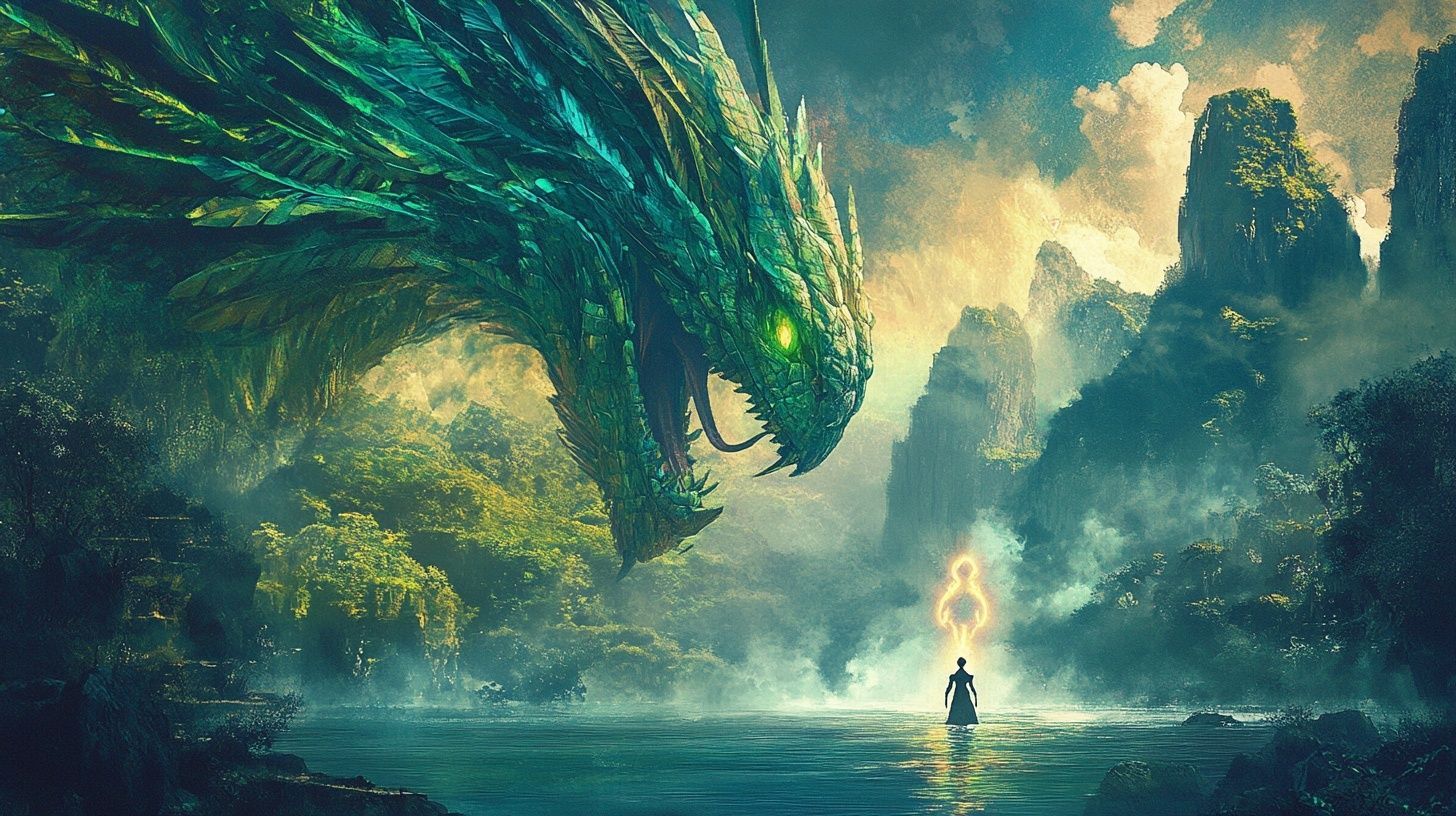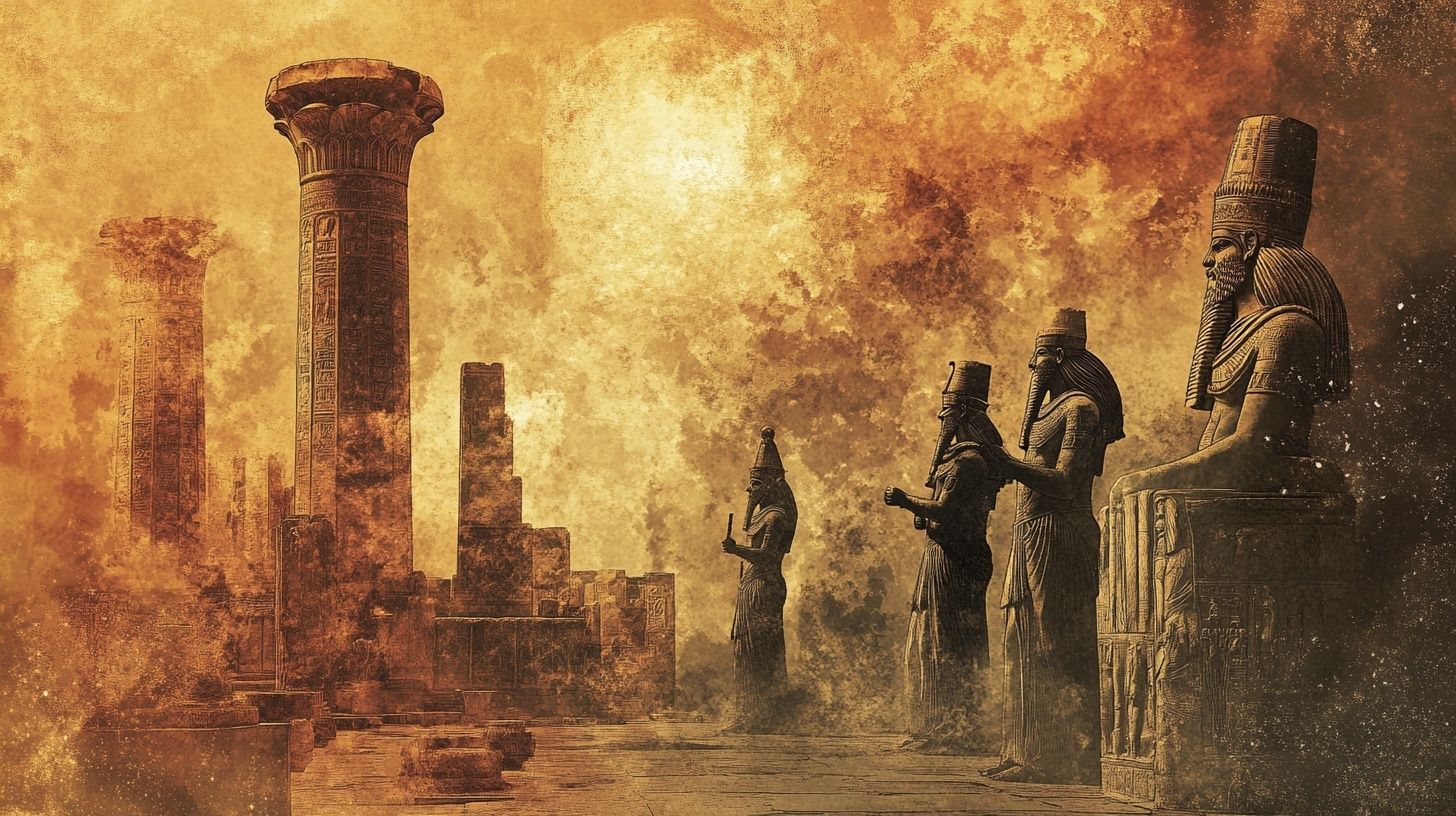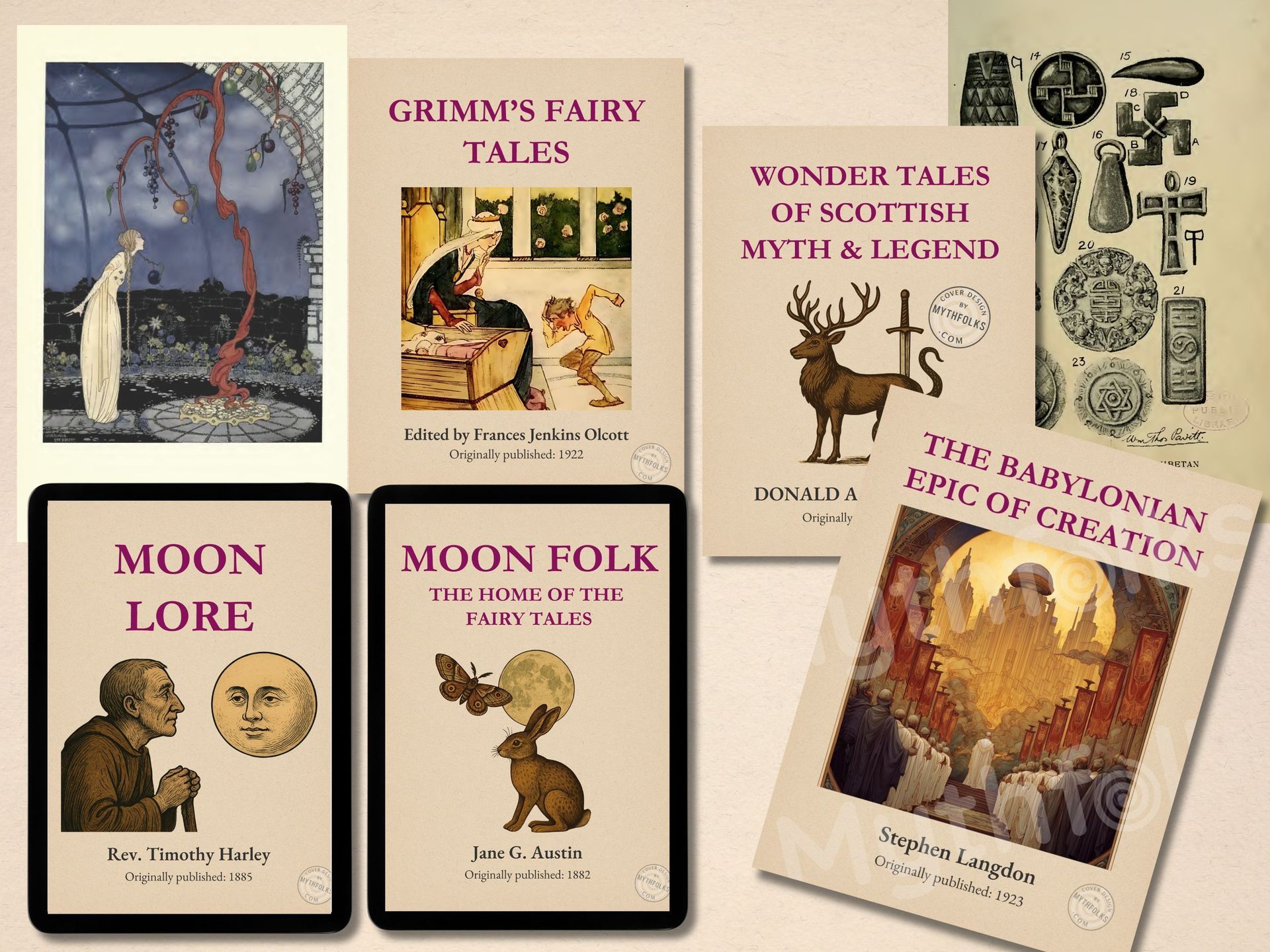The gods & goddesses of Norse mythology (including the ones you’ve never heard of)
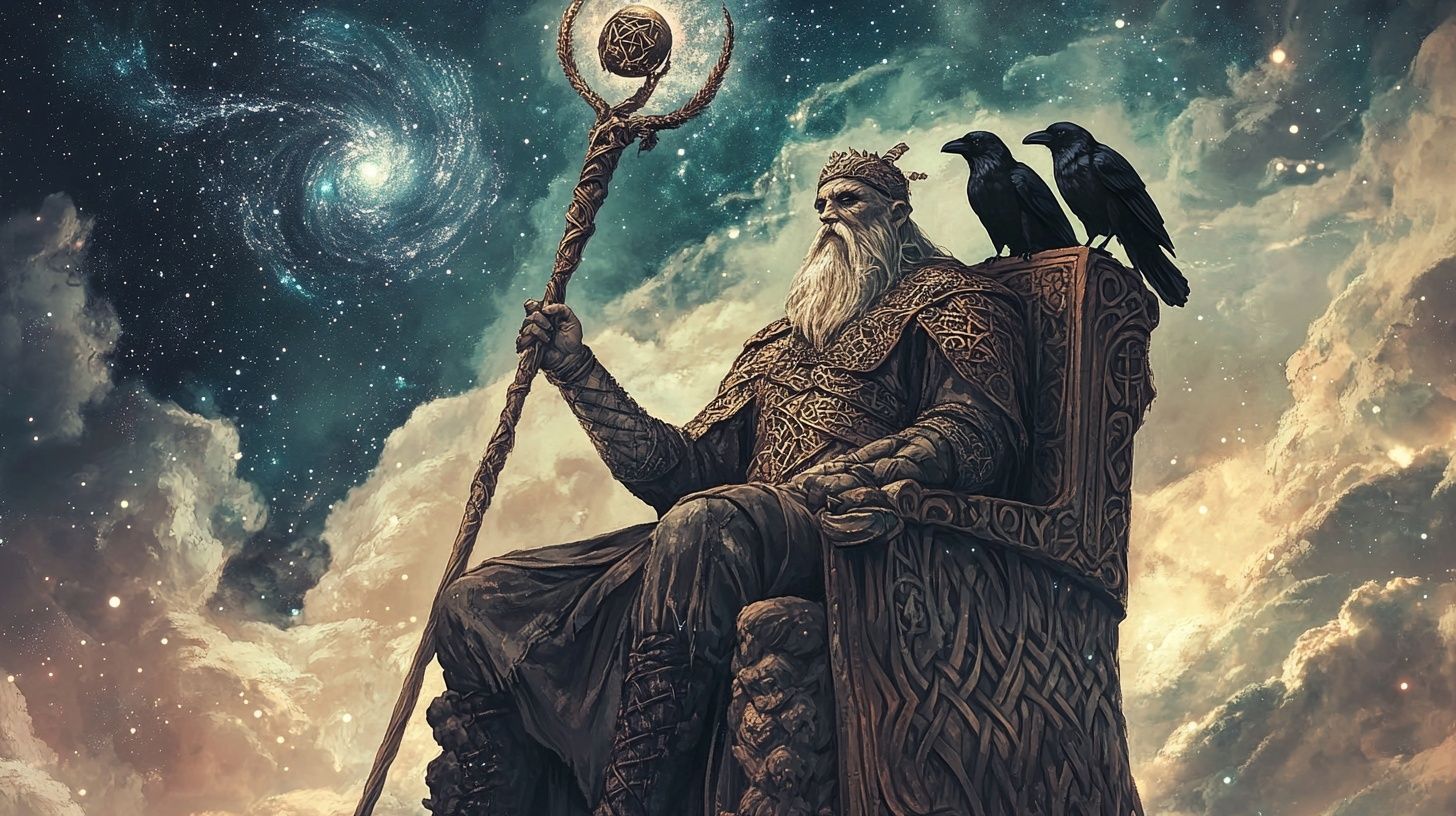
The Norse gods & goddesses are probably the most famous pantheon in modern pop culture thanks to those movies (not to mention all the other tv shows and video games).
But while Thor, Odin, Loki and a few others might bring some recognition, lots of the original stories and details get missed in modern adaptations. Plus, the lesser-known gods of Norse mythology usually get completely overlooked.
Read on to learn some lesser-known details about the more famous gods - and lots of stories about the lesser-known ones…
Published: 12th Oct 2025
Author: Sian H.
A quick intro to Norse mythology for context
Of course the mythology spreads far and wide, but for the purpose of understanding the tales of the gods coming up, it's useful to briefly understand how the Norse universe fits together (if you're already familiar just jump ahead!).
The Norse cosmos consists of the Nine Worlds, a collection of realms for all beings, connected by the great world tree, Yggdrasil. The pantheon itself is a union of two divine tribes: the Æsir, gods of power and war, and the Vanir, gods of nature and fertility, who joined forces after a primeval war.
The central conflict is the ongoing war between the gods and the Jötnar (giants). The greatest threats to the gods are Loki's three monstrous children: the great wolf Fenrir, destined to kill Odin; the World Serpent Jörmungandr, fated to be Thor's final opponent; and Hel, the queen of the dead.
Ragnarök, or the "Twilight of the Gods," is the prophesied end of the world that hangs over the mythology. It's a specific series of events: a great winter will fall, the sun and moon will be devoured by wolves, Loki and his monstrous children will break free and the gods will meet them in a final battle where most of them will die.
While this prophecy informs the more tragic tales, the mythology also contains stories of simple adventure and outright comedy.
The core family of Asgard (the Æsir)
The drama of the Norse gods unfolds in the famous Asgard, a mighty fortress-realm connected to the human world by a shimmering rainbow bridge (the Bifröst). At the heart of the kingdom sits the ruling family, their lives are a saga of power, betrayal and tragic loss that will ultimately decide the fate of all the worlds.
Óðinn (Odin): the god of war & wisdom
The chief of the Æsir gods, Odin is a relentless seeker of knowledge and power, a god of war, wisdom, poetry and death.
He famously sacrificed his own eye for a single drink from Mímir's Well of Wisdom (though which eye is still debated by folklorists).
His obsessive quest for insight led him to perform an even greater act of self-sacrifice: to learn the secrets of the runes, he wounded himself with his own spear and hung from Yggdrasil, the World Tree, for nine agonizing nights. At the final moment, he grasped their hidden knowledge, cementing his role as a master of cosmic secrets.
Odin often wandered the earth in disguise to test the character of mortals. In one tale, as a traveller named Grimnir, he was captured and tortured by the cruel King Geiröd.
Chained between two fires, Odin was shown kindness only by the king's young son. After eight nights, the god revealed himself in his full glory. The terrified king rushed to free him but tripped and fell on his own sword, dying for his failure of hospitality (note: the specified time of "eight nights" is found in some re-tellings but is not consistent across all sources).
His name is known across the ancient Germanic world. The name Wodan comes from the Old German word watan, meaning "to penetrate" or "to conquer all opposition," defining him as the "all-conquering Spirit of Nature". Other related names include Gwodan (Longobards), Godan (Franks), and Wode (Saxons).
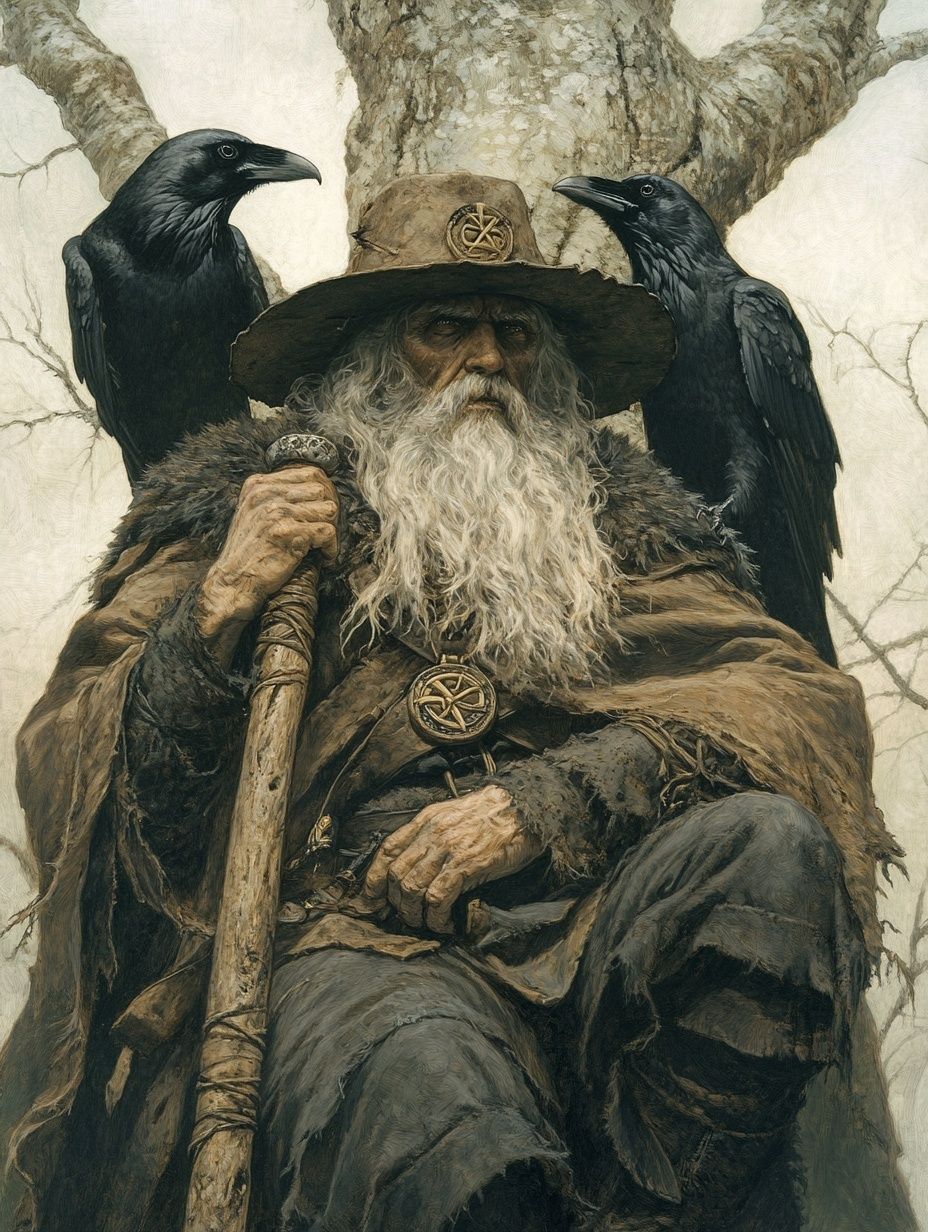
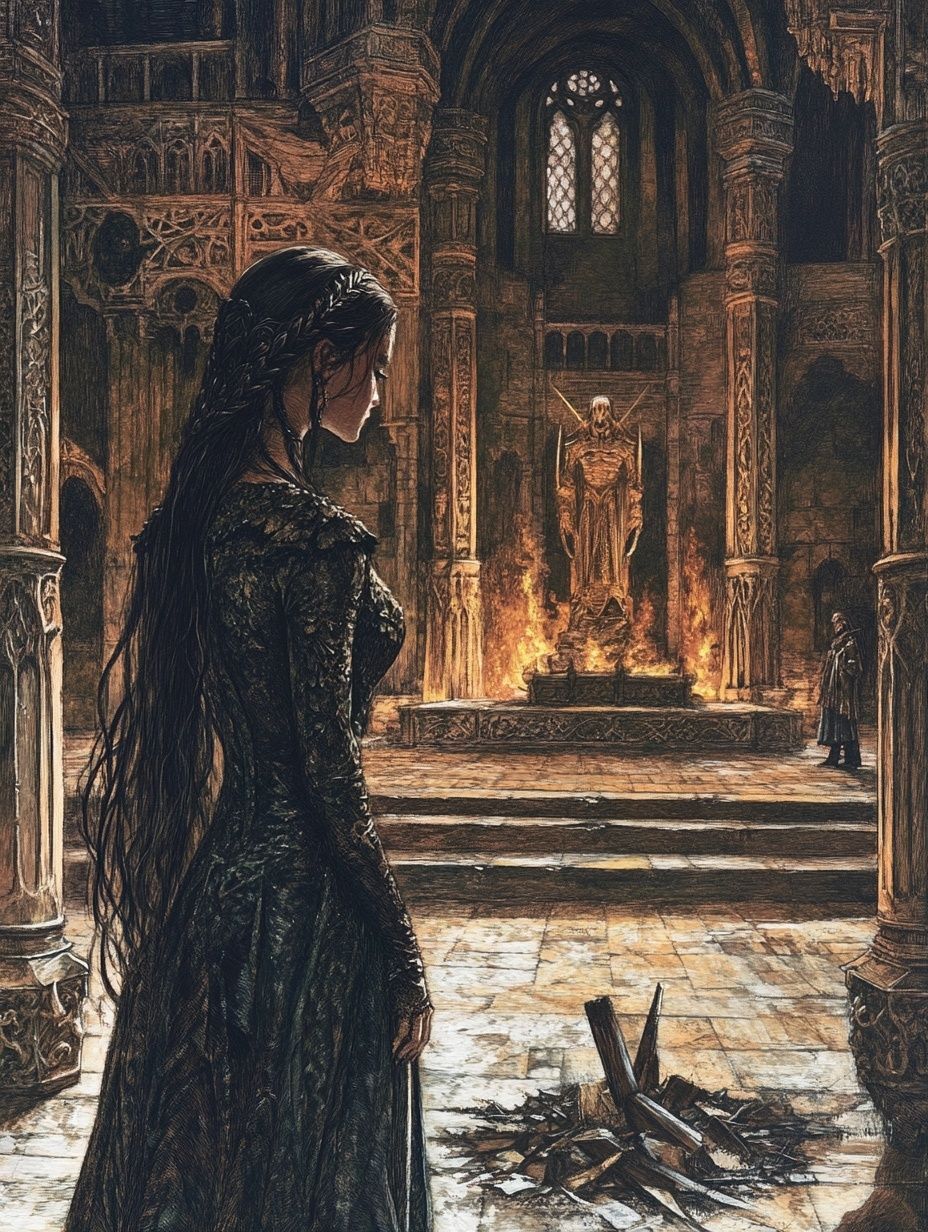
Frigg: the goddess of motherhood & prophecy
Frigg is Odin's wife, the Queen of the Æsir and a powerful goddess of foresight, motherhood and the home.
It's said she knows the fate of all beings but chooses not to speak of it. As the mother of the beloved god Baldur, her primary story is a tragic one of desperate, and ultimately failed, protection (keep reading to the other gods below to find out more).
A more obscure tale from a 19th century text reveals a cunning and flawed side to her character.
Wanting a magnificent new necklace, Frigg conspired with the makers of a golden statue of Odin to shave off some of the gold.
When Odin discovered the theft, he was furious and used his magic to make the statue capable of speech so it could name the culprit.
To prevent her shame from being exposed, the terrified Frigg employed a "serving demon" to destroy the statue before it could talk.
As punishment for this deception, Odin abandoned Asgard, allowing a "false Odin" (Winter) to usurp his throne and plunge the world into a bitter cold until the true god's eventual return.
Þórr (Thor): the god of thunder
The son of Odin and arguably the most famous of all the Norse gods, Thor is a red-bearded, hammer-wielding champion of thunder, strength and protection.
Known for his ferocious temper and simple courage, his greatest role is defending both gods and humanity from the forces of chaos.
On a fishing trip with the giant Hymir, he famously hooked the World Serpent, Jörmungandr, and nearly pulled the beast from the cosmic ocean before the terrified giant cut his line.
In one of his most memorable stories, his hammer Mjölnir is stolen by the giant Thrym, who demands the goddess Freyja as his bride for its return (more on Freyja below in the section on Vanaheim).
On the advice of the other gods, Thor himself dresses in bridal garments and travels to the wedding feast with Loki as his handmaiden.
After astonishing the giants by eating an entire ox and eight salmon, the hammer is placed in his lap to consecrate the marriage.
Thor seizes Mjölnir, throws off his veil and promptly slaughters the entire giant clan. His hammer,
Mjölnir, remains a powerful symbol of protection and is popularly used in many games and stories.
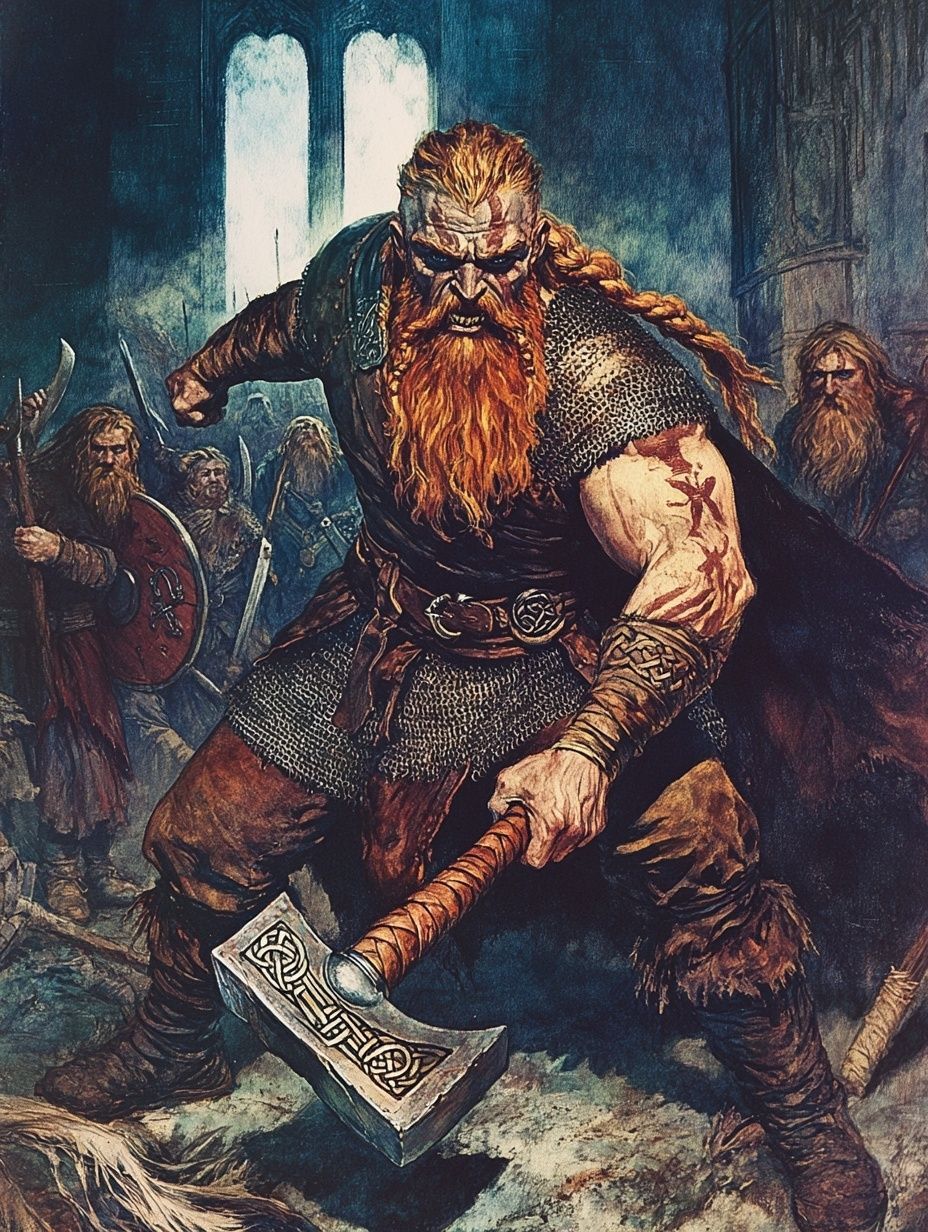
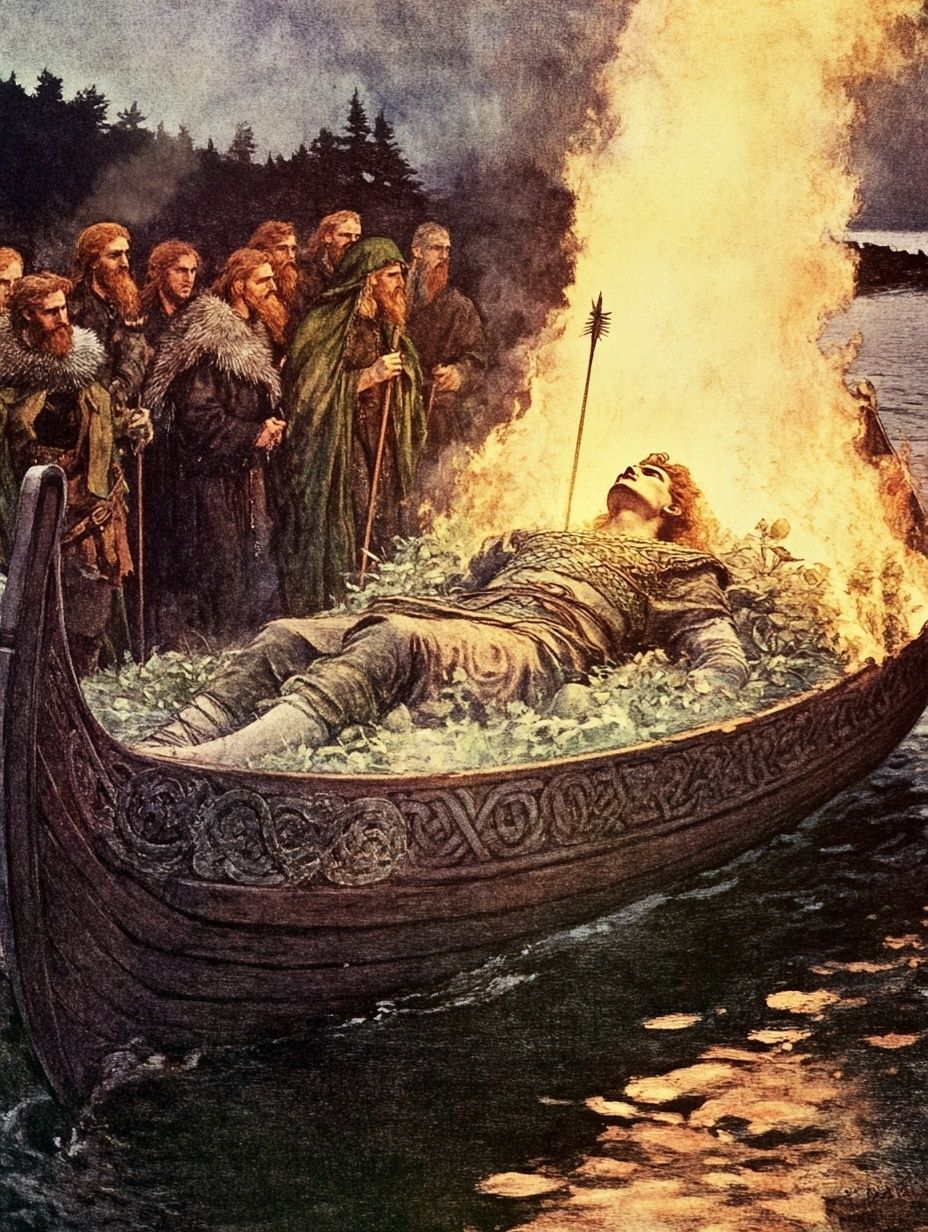
Baldur: the god of light & joy
The tragic son of Odin and Frigg and Thor's half brother, Baldur was considered the most beautiful, gentle and beloved of all the gods.
A figure of light, innocence and purity, he was plagued by dreams foretelling his own death.
In a desperate attempt to save him, Frigg travelled across the nine worlds and extracted an oath from every single thing - fire and water, stone and steel, animal and plant - not to harm her son.
This made him effectively invulnerable and the gods amused themselves by throwing weapons at him, watching as everything bounced harmlessly away.
Unfortunately, Baldur was one of the many beings that would suffer at the hands of Loki...
Loki: the god of mischief & trickery
Another famous name - In the original texts Loki was Odin’s blood-brother and of giant-kin, though he was later sometimes called his adopted son and this was used in the Marvel movies.
Loki is probably the most ambiguous and dangerous figure in the Norse pantheon, a shapeshifting god of mischief and fire whose cleverness sometimes saves the gods, but whose malice ultimately brings about their doom.
Jealous of Baldur's popularity, Loki discovered the one thing Frigg had overlooked when extracting her oaths: the humble mistletoe, which she had deemed too young and harmless to bother with.
Loki fashioned a dart from it and approached Baldur's other brother, the blind god Höðr, who was standing aside during the gods' game.
Loki guided Höðr's hand, tricking him into throwing the mistletoe dart. It struck Baldur and killed him instantly, sending the shining god to the realm of the dead.
Later, when the gods bargained for Baldur's return, the underworld queen Hel (Loki's daughter) agreed to release him if every living thing would weep for him.
All did, except for a single giantess in a cave - Loki in disguise - whose refusal sealed Baldur's fate and also cemented his position as an absolute [fill in your own descriptor].
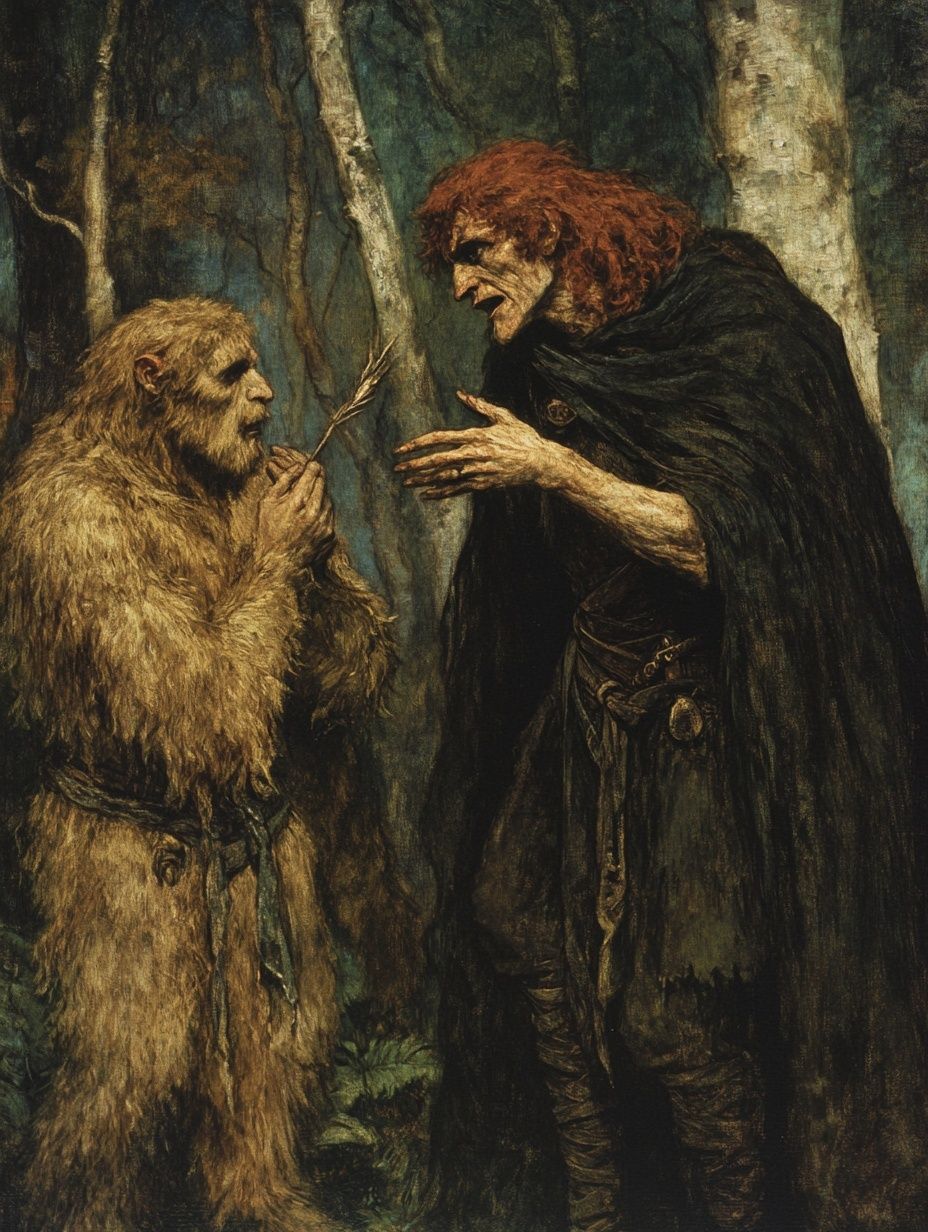
The extended pantheon (and more obscure gods of Asgard)
Beyond the core ruling family, the Norse pantheon includes other - mostly lesser-known - Æsir gods who hold specific roles in Asgard. Their stories help to flesh out the wider society of the gods and the functions required to maintain it
Heimdallr: the god of the watch
One of the most important gods of the Æsir, Heimdallr is the ever-vigilant guardian of the Bifröst, the rainbow bridge that connects to Asgard.
Born from nine mothers (!), he has golden teeth, hearing so sharp he can perceive grass growing on the earth and requires less sleep than a bird.
His role is one of constant watchfulness, a duty that culminates at the start of Ragnarök. It's Heimdallr who will sound the Gjallarhorn, a horn whose blast can be heard throughout the nine worlds, to awaken the gods for their doom.
In this great conflict, he and his sworn enemy, Loki, are fated to kill one another.
Týr: the one-handed god of justice
The bravest of the gods, Týr is a god of law, justice and solemn oaths.
His defining story comes from the binding of the monstrous wolf, Fenrir. The beast was too strong for any chain, so the gods presented him with a magical, unbreakable ribbon, claiming it was merely a game.
The suspicious wolf agreed to be bound only if one of the gods would place their hand in his mouth as a pledge of good faith. Only Týr had the courage to do so. When Fenrir realised he was trapped, he bit off Týr's hand. This act of sacrifice for the sake of law and order is his defining characteristic.
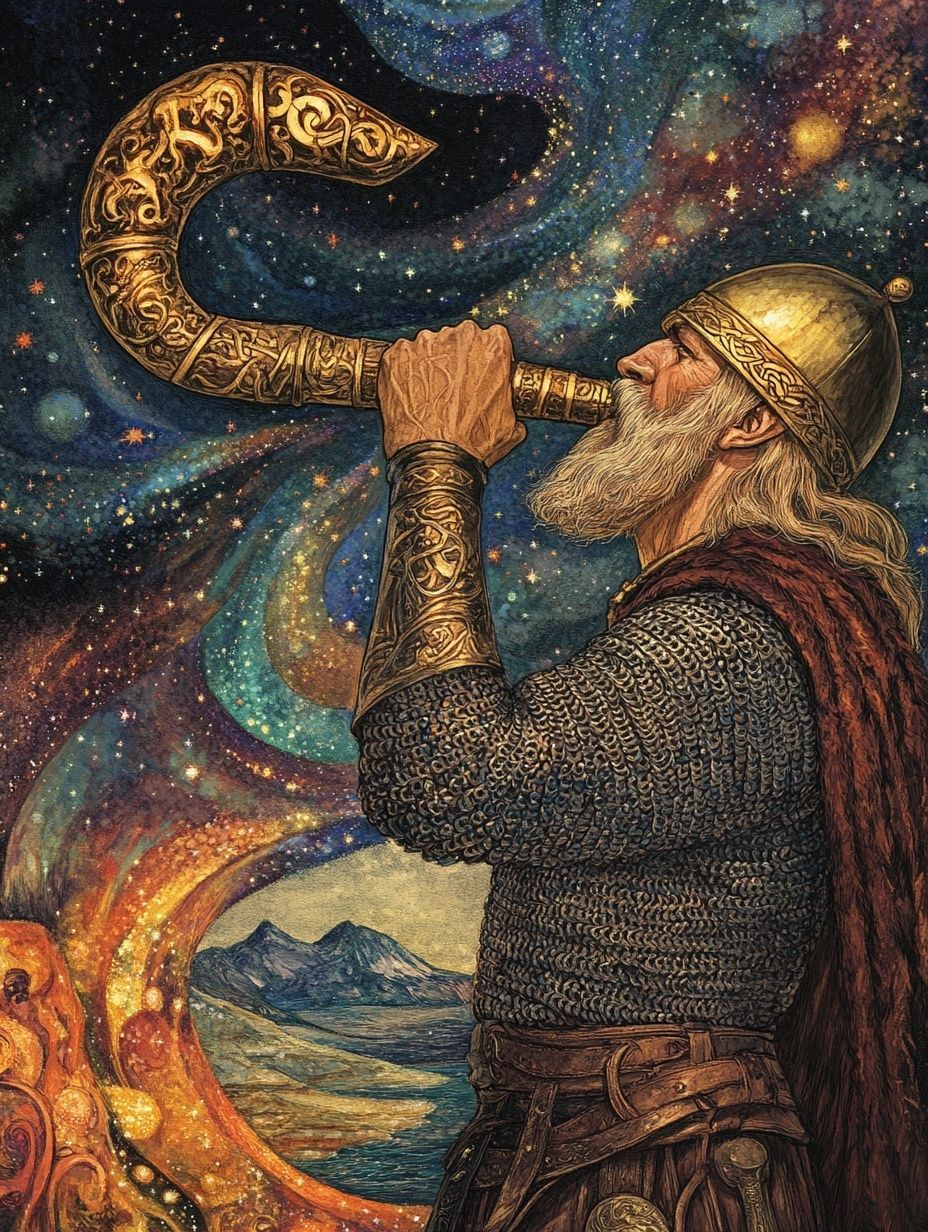
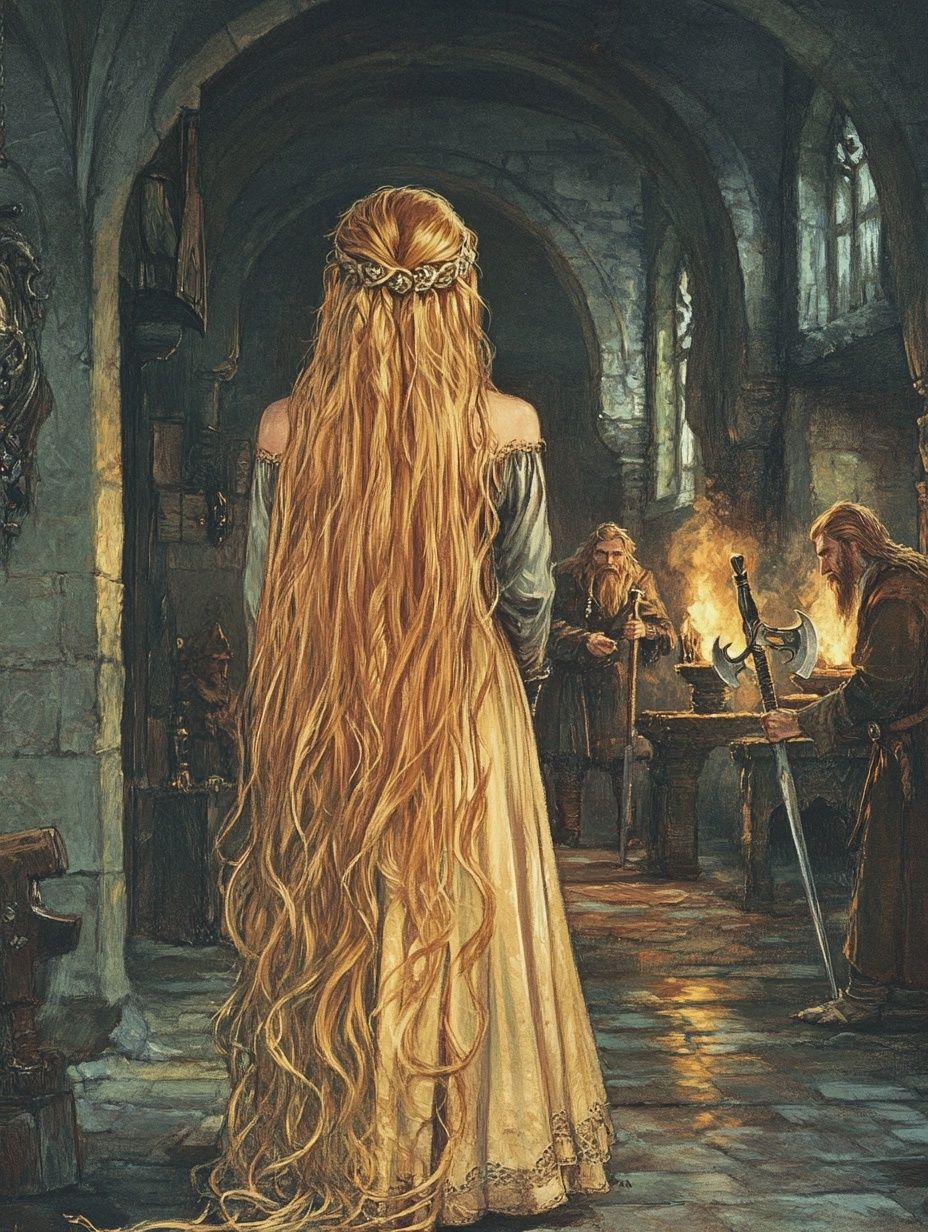
Höðr (Hodr) & Váli: tragedy and vengeance
The death of Baldur involved two of his brothers, including Höðr (who I mentioned in Loki's section), another son of Odin and Frigg. He was a strong god of darkness who was blind.
As the unwitting instrument of Loki's plot, he became his own brother's killer. In response to this crime, Odin conceived another son, Váli, for the sole purpose of vengeance.
A terrifying figure, in some sources, Váli grew to full adulthood in a single day and fulfilled his destiny immediately: he journeyed to Asgard and killed Höðr, embodying the Norse duty of blood vengeance. Poor Hodr.
Sif: the earth-goddess of fertility & harvest
Thor's wife, Sif, is an earth goddess associated with the harvest. Her most famous story begins with an act of pure malice from Loki, who sheared off her magnificent golden hair, a symbol of a field of ripe grain.
The enraged Thor forced Loki to fix his mistake. To save his life, Loki went to the dwarves, who forged not only a new head of magical, growing golden hair for Sif but were also tricked into creating some of the gods' greatest treasures, including Thor's hammer Mjölnir and Odin's spear Gungnir.
Víðarr (Vidar): the silent god of vengeance
Yet another son of Odin (his mother is the giantess Gríðr), Vidar is a quiet figure and second in strength only to Thor.
He wears a special, heavy shoe made from all the leather scraps cut by shoemakers throughout history.
During Ragnarök, after the monstrous wolf Fenrir devours Odin, Víðarr will stride forward to avenge his father.
He will use his massive shoe to stomp on the wolf's lower jaw, then grasp its upper jaw and tear its mouth apart, killing the beast and surviving the end of the world.
Ullr: the god of the hunt & skis
Thor's stepson, Ullr, is an ancient god of archery, hunting and skiing (I confess, I had never realised there were gods of skiing!).
He lives in the "Yew Dales," a nod to the wood used for making the best bows.
While Ullr lacks a single, defining narrative, Snorri Sturluson's Prose Edda mentions that he is so handsome and has the "manners of a warrior" that it is good to invoke him in single combat.
Later Scandinavian sources suggest that when Odin was exiled for a time, Ullr was chosen to rule Asgard in his place for ten years, establishing him as a powerful and respected figure capable of leading the pantheon through a long winter.
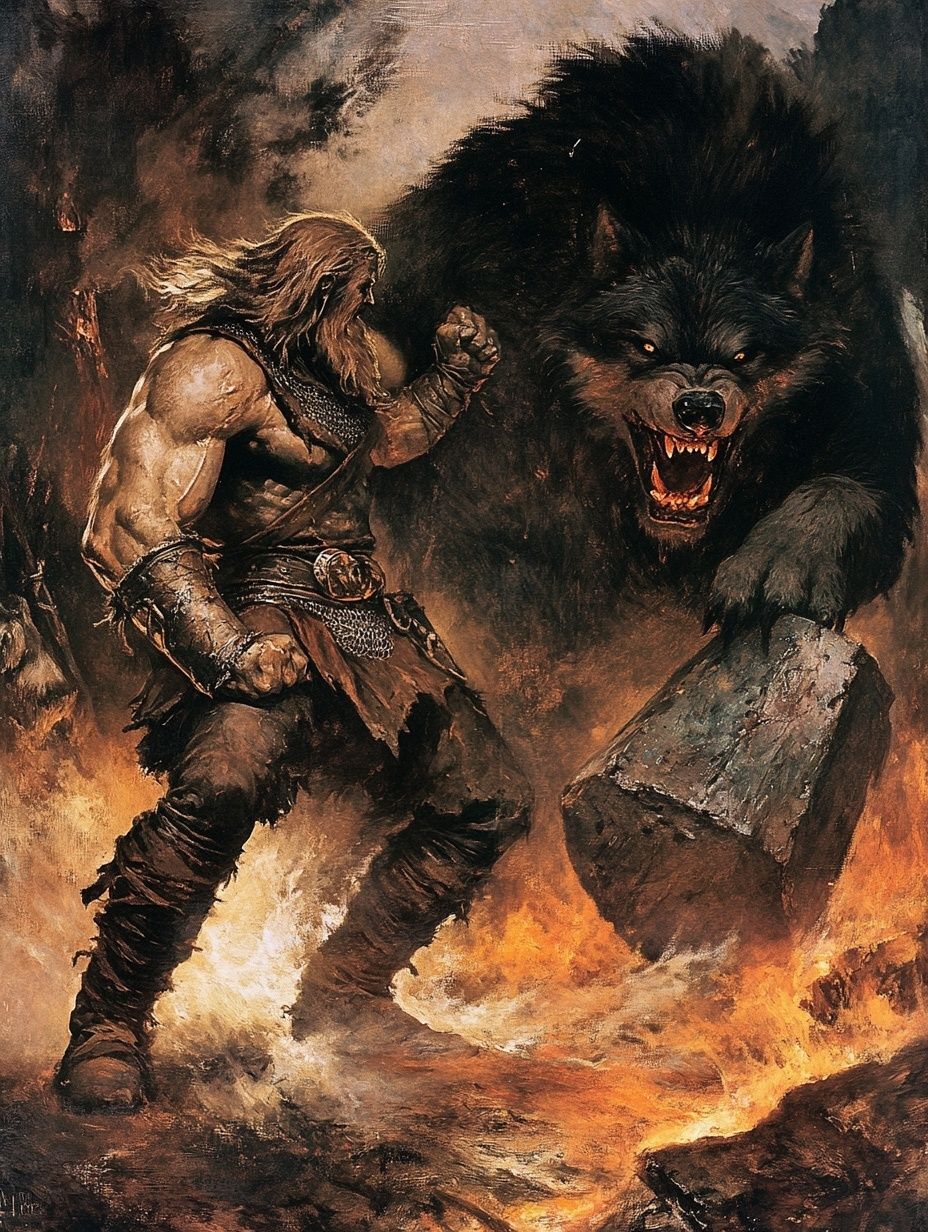
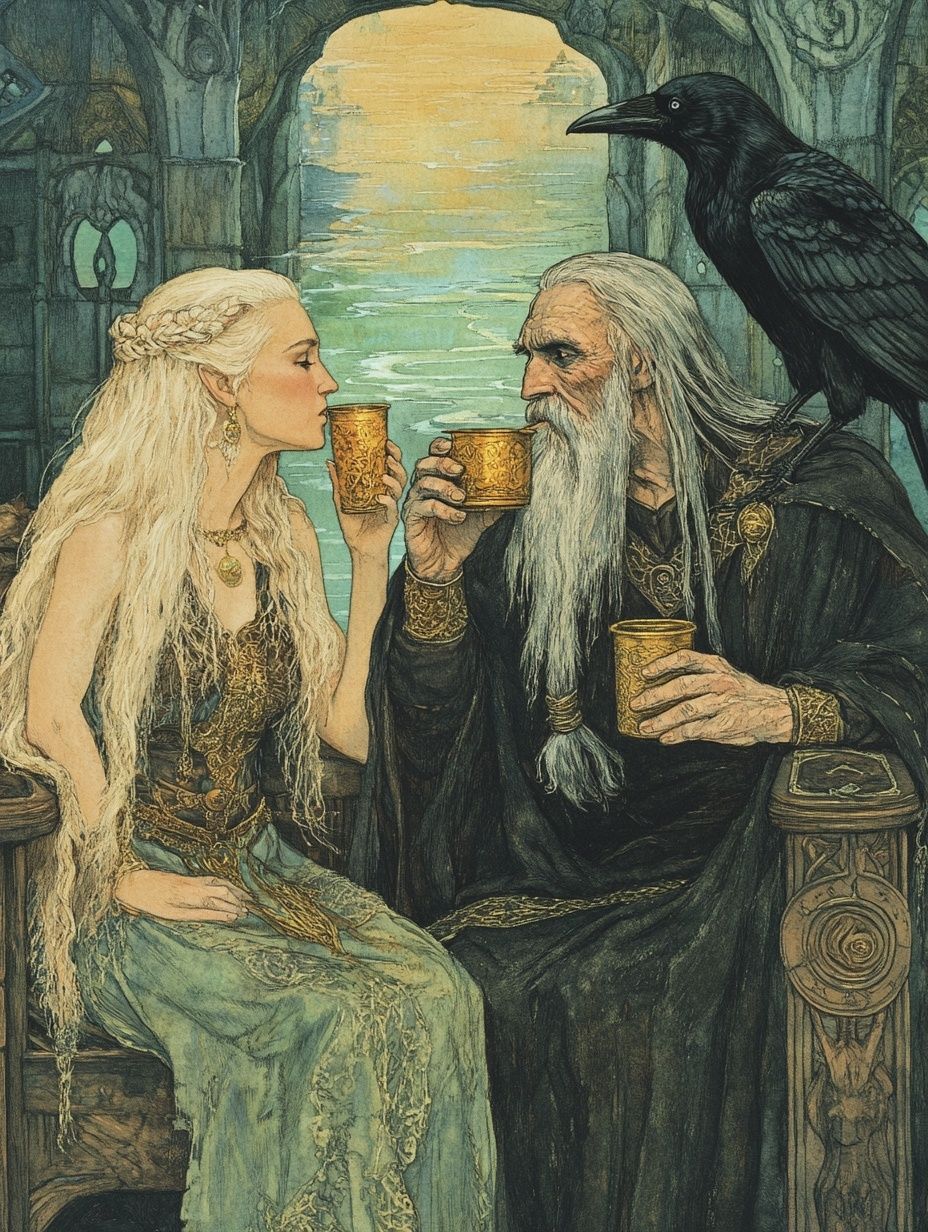
Forseti: the god of justice & tranquility
Baldur's son, Forseti, is the god of justice, peace, and reconciliation. He sits in his shining hall, Glitnir and settles all legal disputes.
According to Frisian legend, when the twelve chieftains of their people were lost at sea, they prayed to the gods for help. A mysterious thirteenth man appeared at their rudder with a golden axe, steered them to land and threw his axe on the ground. A spring gushed forth and there he taught them the laws by which they should live. This figure is widely believed to have been Forseti, acting in his role as the ultimate divine lawgiver.
Iðunn (Idun) & Bragi: the keepers of youth and poetry
Iðunn is the goddess who guards the golden apples that grant the gods their immortality. Her husband is Bragi, the eloquent god of poetry.
One story involves Loki luring Iðunn into the clutches of a giant, causing the gods in Asgard to wither and grow old until they force Loki to rescue her.
In another, from the poem Eiríksmál, after the heroic king Eric Bloodaxe is slain, Odin sends Bragi to greet him in Valhalla. Bragi’s task is to use his poetic skill to welcome the king, ask him about his deeds, and formally usher him into the hall of heroes - in the Norse world, words were as important as swords.
Sága: the goddess of history
A mysterious goddess of wisdom,
Sága's name literally means "story." She lives in a crystal palace beneath a cool river where she and Odin drink together day after day from golden beakers, sharing in the deep knowledge of the cosmos.
Gefjun: the goddess of fertility
A goddess of ploughing, fertility and virginity, it was said that women who died as virgins became her attendants in the afterlife.
In one story, the Swedish king Gylfi promised Gefjun as much land as she could plough in a single day and night. Gefjun travelled to the land of the giants and returned with her four sons, whom she disguised as immense oxen. She yoked them to a plough and they drove it with such force that it tore a huge piece of land from Sweden and dragged it into the sea, creating the island of Zealand (the island where Copenhagen now sits). The vast hole left behind filled with water and became Lake Mälaren.
The gods of Vanaheim (the Vanir)
Before their union with the Æsir, a second tribe of gods known as the
Vanir ruled. Hailing from the realm of Vanaheim, these deities were masters of nature, fertility and prosperity. After a long and destructive war between the two families, a truce was called. To seal the peace, they exchanged hostages. The Vanir sent their most noble members to live in Asgard, where they were welcomed and became honored members of the pantheon.
Njörðr (Njord): the god of the sea
The patriarch of the Vanir, Njörðr is the god of the sea, wind and wealth. After the Æsir-Vanir war, the giantess Skaði marched on Asgard demanding retribution and was offered a husband from the gods.
Forced to choose by looking only at their feet, she picked Njörðr. Their marriage was doomed; she was a goddess of the mountains and could not stand the sea, while he hated the howling winds of her mountain home, so they agreed to separate.
Freyja: the goddess of love, beauty & wealth
Njörðr's daughter Freyja is a formidable goddess of love and prophetic magic. She rides a chariot pulled by two cats and claims half of all warriors slain in battle for her hall, Fólkvangr. She was married to a mysterious god named Óðr
who often wandered away, and in his absence, Freyja would travel the world searching for him, weeping tears of pure gold.
Freyr: god of fertility & peace
Freyja's twin brother,
Freyr, is a much-loved god of fertility and bountiful harvests. His most defining story is a sacrifice for love. After spying the beautiful giantess Gerðr, Freyr was so overcome with desire that he gave away his magical, self-fighting sword to win her hand. This sacrifice leaves him defenseless at Ragnarök.
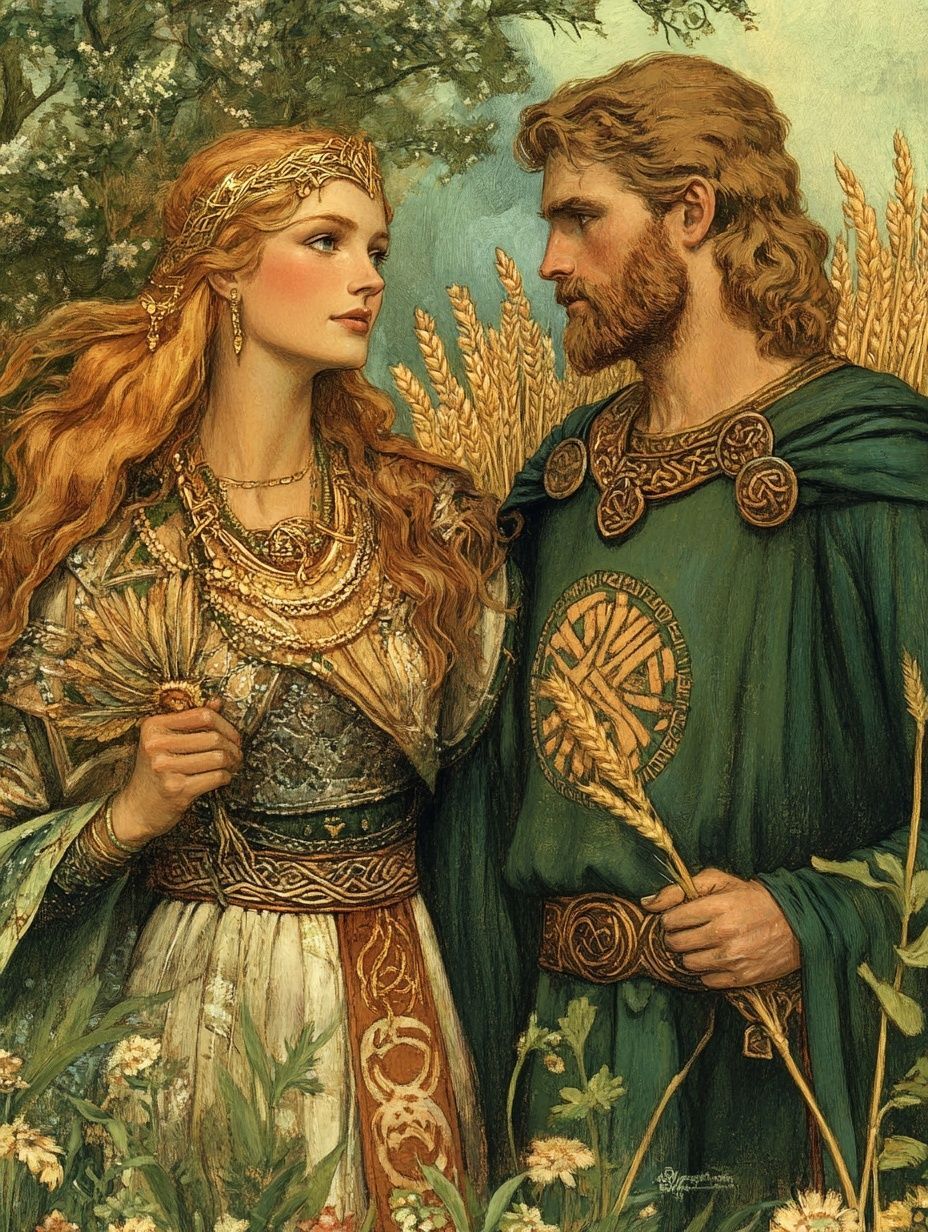
Other key figures of the cosmos
Beyond the two main families of gods, other powerful divine beings are central to the Norse myths, their lineages often tracing back to giants or primal forces. I've mentioned them briefly in some of the stories above but they deserve their own individual mention here for ease of reference.
Jörð (Jord): the earth goddess
Thor's mother was Jörð (Odin did get around a bit), the personification of the Earth itself and the daughter of the giantess Fiorgyn. She was Odin's consort before he married Frigg, but the myths tell that this "dark Earth-goddess" could not manage the immense strength of her infant son, so he was given to foster-parents to be raised.
Skaði (Skadi): the giantess of the hunt
The giantess who married Njörðr, Skaði is a fierce and independent figure in her own right. A goddess of skiing, hunting, and the harsh winter mountains, she chose to leave her husband and return to her father's hall in the coldest, highest peaks, the embodiment of the unforgiving beauty of the winter landscape.
Hel: the queen of the underworld
The daughter of Loki,
Hel
was cast down by Odin to rule over the cold realm of the dead. An unyielding figure, often depicted as being half a beautiful woman and half a decaying corpse, her decree is absolute. She proves this after Baldur's death, when her father (in disguise) doesn't cry and she subsequently refuses to restore Baldur's life.
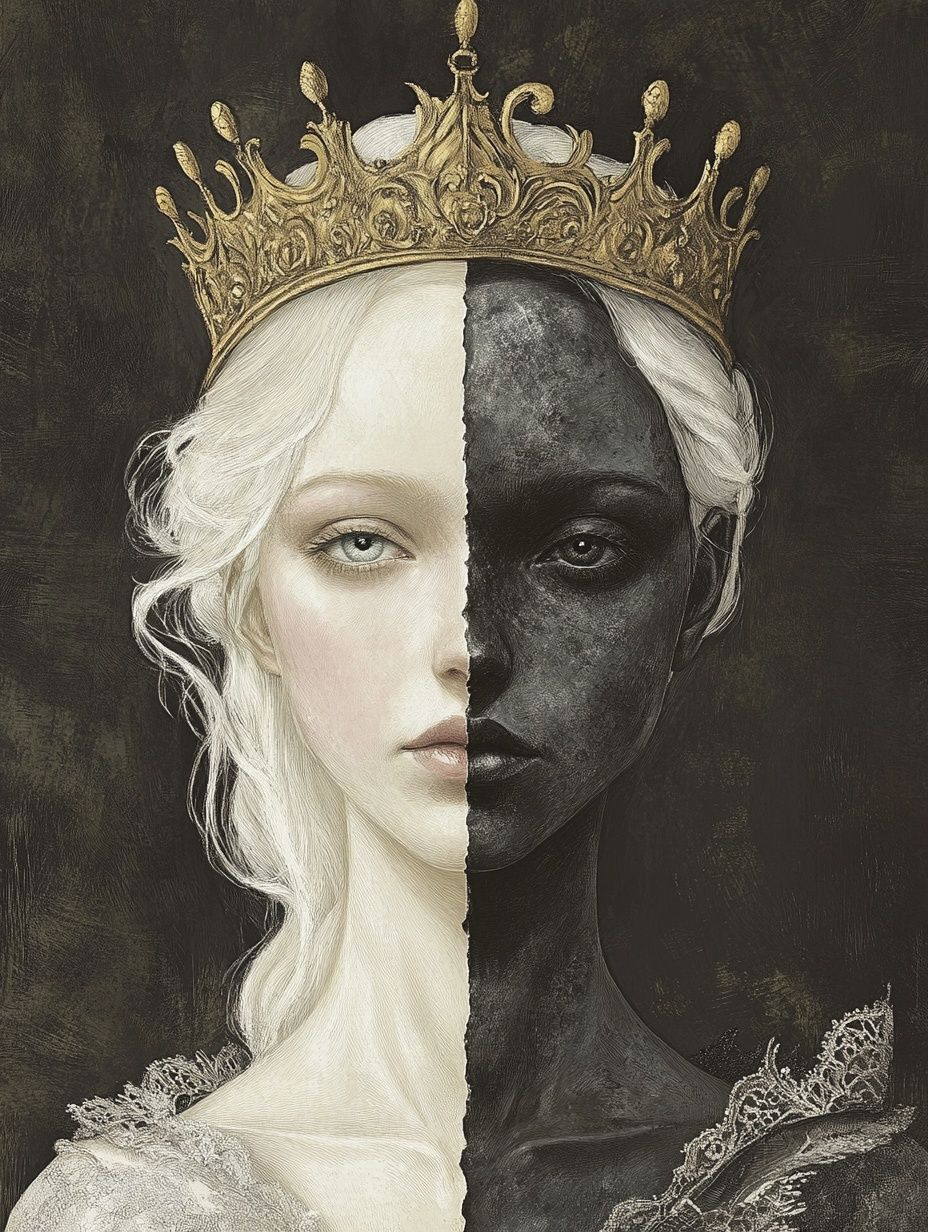
A note on Norse gods names and spellings
The spelling of names in folklore often changes as stories are passed down through different languages and cultures and Norse mythology is a prime example. Here are the main reasons for the variations:
- Regional Differences: The same god was known by different names across the wider ancient Germanic world. The deity called Odin in Scandinavia was known as Wodan by other Germanic races, and by other names like Wode and Godan among different tribes.
- Anglicization: Many Old Norse names have grammatical endings that are dropped in modern English to make them easier to say. For example, the "-r" at the end of a name like Heimdallr is a grammatical case ending that is removed to create the simpler English version, Heimdall.
- Special Characters: The Old Norse language uses letters that don't exist in the English alphabet, such as þ (Thorn) and ð (Eth). Both are typically replaced with "th" in translation. This is why the authentic Old Norse name Þórr is almost always written as Thor in English.
The Norse pantheon is a classical world of flawed, passionate and powerful figures, each driven by destiny and the inevitability of Ragnarök, where most of them will be destroyed.
Although the elements are often fantastical, these stories are at their core - human - and it's these parts that we usually find so fascinating today. Don't forget to check out more gods and goddesses from ancient mythology here!
Article sources
- Wägner, W. Asgard and the Gods: The Tales and Traditions of Our Northern Ancestors. Adapted by M. W. Macdowall. Edited by W. S. W. Anson. London: George Routledge & Sons, Limited, 1917.
- Flowers, Stephen E. Icelandic Magic: Practical Secrets of the Northern Grimoires. Rochester, VT: Inner Traditions, 2016.
You might also like


